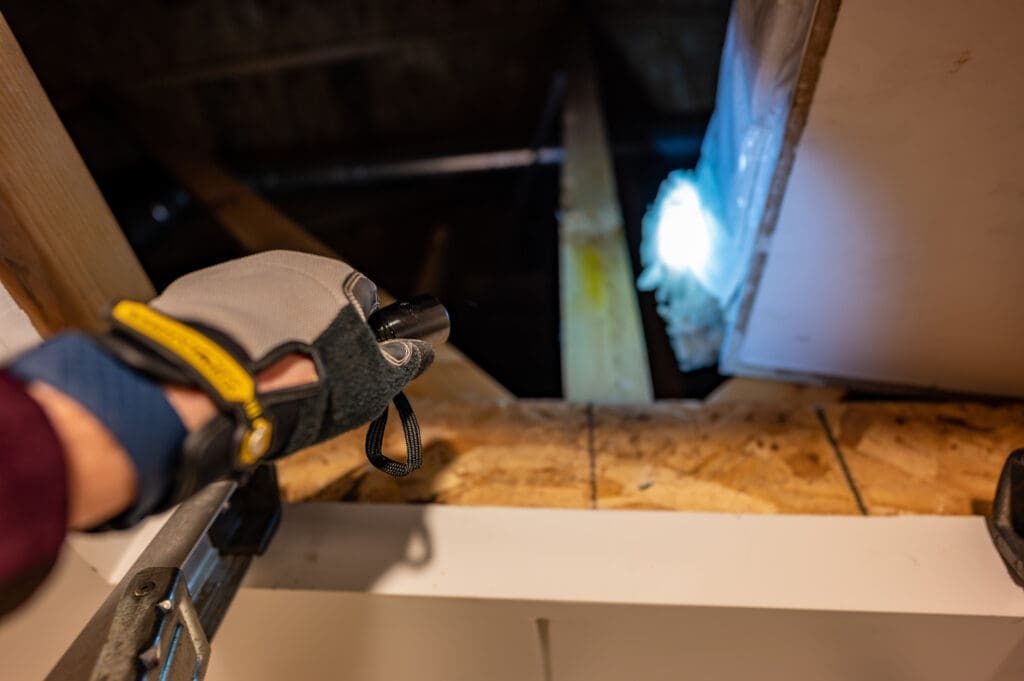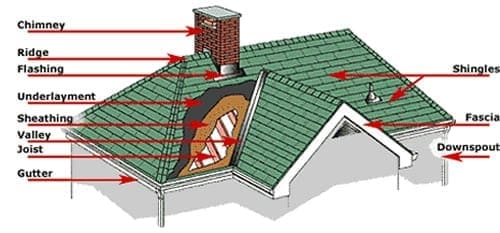Keeping an eye on the condition of your home is crucial to keeping it in good working order. For some parts of your home, that’s easy. You’re using your bathrooms and kitchen and garage every day. If something breaks or starts failing, it’s easy to notice. For other parts of your home, though, signs of trouble are more subtle. Your roof is one of those parts, so it’s a good idea to give it a good look periodically. One major trouble spot is poor attic ventilation, which can cause problems in other areas too. Let’s look at 5 signs of poor attic ventilation in your home.
What is the purpose of attic ventilation, anyway? Ventilation in your attic is supposed to provide a continuous flow of fresh air from the eaves and out the top. This flow moves both warm air and moisture out of the attic space and away from the living space below the attic. Because hot air naturally rises, a properly built roof with adequate vents will handle this function just fine. If something goes awry, though, you might experience the following problems.
High Electric Bills
Do your electric bills seem sky high? Does it seem like your AC runs constantly but still isn’t really doing the job? That is a clue that your attic is staying too warm and hot humid air is not getting exhausted out the top vents as it should.
Uneven Cooling/Warm Rooms
If you notice this problem, it would be a good idea to contact an HVAC professional to inspect your system. Is it operating properly? Which rooms are too warm? Just those on the second floor? Or are they scattered around the house. It’s helpful to rule out HVAC issues in this way, as this problem could be all about the AC unit, ductwork, or both. If not, though, having a roofing contractor check out your roof and ventilation is worth the effort. Checking the attic on a hot day makes sense, too. Can you tell if air is moving through the space, or does it seem stagnant?
Moisture and Stains
When excessive moisture is present where it doesn’t belong for a while, it will often leave a stain. You’ll notice moisture stains on wood framing and decking in your attic, for example. And when excessive moisture is present for awhile due to poor ventilation, there’s a good chance gravity will help it find its way into your home. So if you see stains on the ceiling or running down the walls, consider that the culprit could be poor attic ventilation.
Mold and Mildew Growth
Excessive moisture in the attic over time, caused by inadequate ventilation, will eventually show up as mold and mildew growth on the wood roof decking and framing in the attic. If you have access to the attic, get in there and take a look. And note what it smells like, too. Mold and mildew always produce a stifling, musty odor in moist attics with inadequate ventilation. They’re also serious health hazards that require specialized mitigation at times. Nasty!
Shingle Damage
Over time, poor ventilation will wreck your asphalt shingle roof from the bottom up. The excessive moisture will start to cause rot in the decking. You can often see this from outside, as the plywood weakens and starts to sag between the rafters or roof trusses, which leads to a wavy look. It can also lose its ability to hold nails, so the shingles then become less-securely adhered over time. Excessive heat in the attic will also weaken and degrade the shingles themselves over time. The adhesive can fail and the shingles become brittle, while the edges start to curl. At this point the roof is a goner. You may be looking at replacing most of the plywood decking in addition to the shingles.
Cold-Weather Condensation
We don’t have to deal with much cold weather in Florida, but the laws of thermodynamics still apply here. Condensation is one of those things that applies when warm, moist air condenses on cold surfaces, such as the underside of your roof. In a poorly ventilated attic, if warm and moist air is getting into the attic but is not exhausted readily, it can condense on any cold surface and collect there. Over time it will cause rot and buckling, as well as mold and mildew. In addition to gradually destroying your roof, this is often the source of moisture that finds its way down into your house over time, causing water stains, along with mold and mildew growth.
Next Steps to Deal With Poor Attic Ventilation
If you can take a look yourself, get a flashlight and get into the attic space. What do you see? Can you tell if the soffit vents, those down low on the roof, are clear of insulation? If you see that they’re blocked by insulation, it’s possible that just moving the insulation out of the way will solve the problem. If you end up doing this, pay attention for the next week or two and see if you notice any change in how the AC works and how warm or cool your house feels.
Another action step is calling on a professional to look things over. This is almost always a good move, as an experienced roofing professional has seen dozens if not hundred of problems and knows how to remedy your particular issue. It’s one thing to simply spot a problem, but it’s another to trace it to the cause, and then figure out what to do to fix it.
Dealing With Signs Of Poor Attic Ventilation
Poor attic ventilation affects a great many homes, and it’s not always clear what the best course of action is. But we’re happy to take a look and help if we can. Give us a call at 813-373-9088. Our team has more than 40 years of experience in roofing. You can also use this form and ask us “What’s the best roof material?” and we will contact you.





